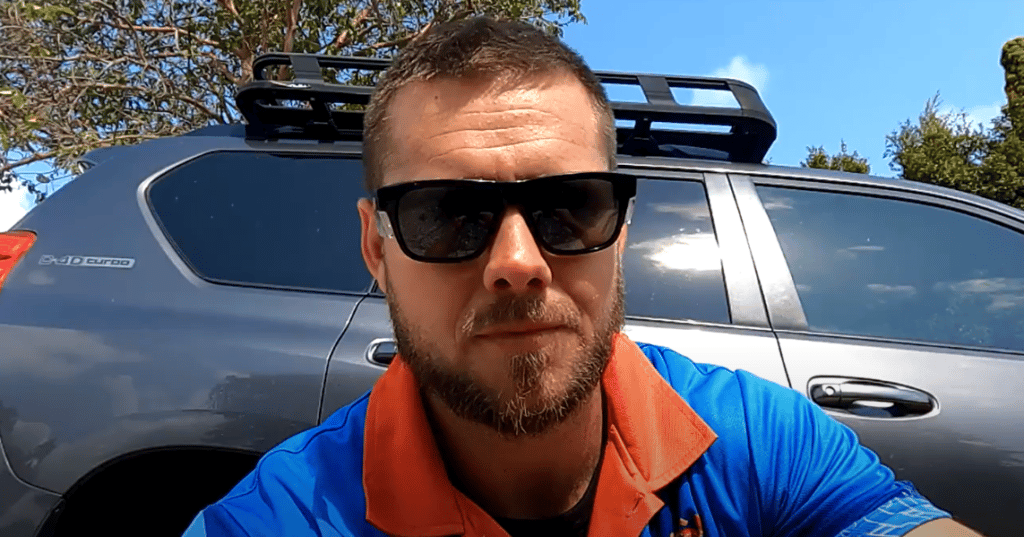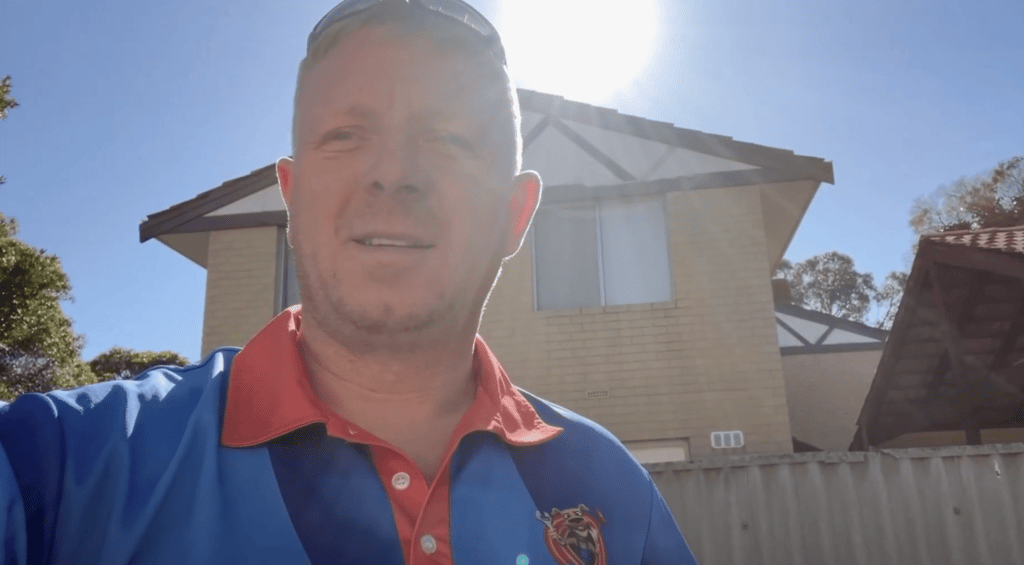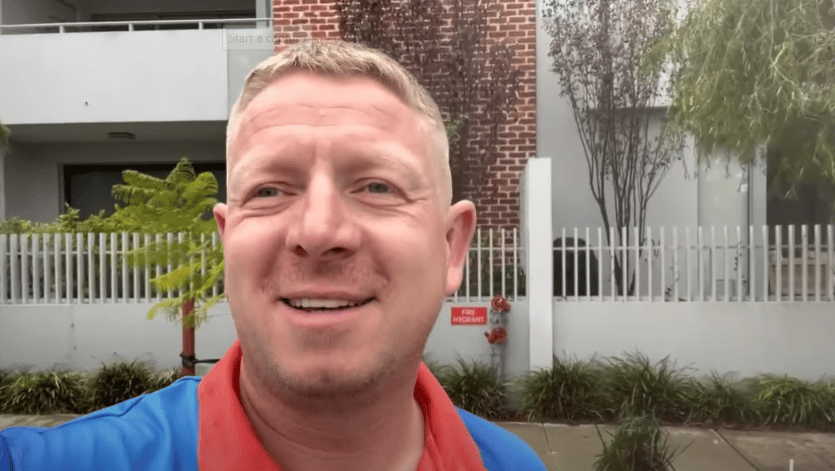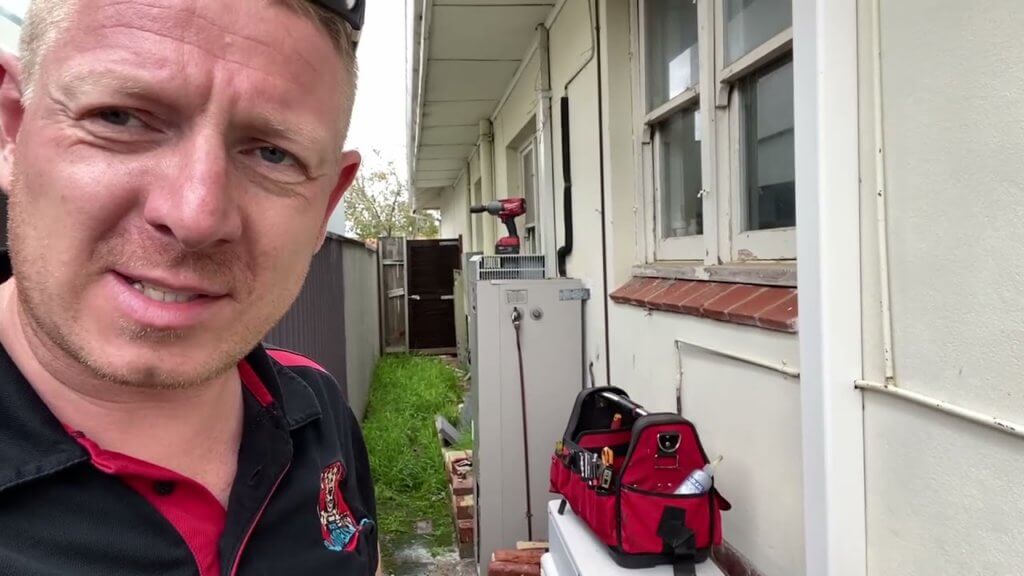Is your hot water system going hot and cold and making you think there’s a fault with your hot water system? Well, watch this video first and you might be able to save yourself some time and money.
Hi everyone. It’s Richard from Plumbdog here. I’m at a property in West Perth, Western Australia. The owner is meeting me on site and she said that the tenant has reported that he thinks there’s a fault with the hot water system because the hot water goes really hot and really cold, and he can’t quite figure it out. So I’ve come out to the property. The tenant’s not home, so it just gives me a little bit of space to work out what’s going on. I’m actually in the ensuite at the moment.
I’ve got the hot water system behind us. In this case it’s an electric continuous flow system and it’s actually one of the new style ones that we recommend. It’s a Stiebel Eltron LCD version and we recommend these all the time. Strangely enough, just recently I’ve been talking to a couple of plumber mates of mine, saying that I’m yet to come across a fault on one, and then lo and behold, a couple of weeks later, there’s a potential fault right behind me.
So we’ll work out what’s going on. It makes it a little bit more interesting on this job because the tenant’s actually a plumber himself, and he hasn’t been able to figure it out yet. So the pressure’s on to work out what’s going on and get the hot water back.
The first thing i’m going to do – you want to see I’ve got my temperature probe ready to go here- is to just want to check the temperature of the system. Is it hot, cold, is it lukewarm? So I’m just going to test it on one of these basin taps just to start with. Let’s find out what we’re dealing with and then we can go from there.
All right, so turn the hot water tap on and you can see the display on the hot water system has come on. These electronics are temperature controlled, so this one’s limited at 50 degrees, but you can change the temperature. It’s on max temperature 50 here, so within a metre we should be getting 49 degrees. Let me turn that temperature program so you can see it. It’s going up there to 49.4, so I would tend to disagree that there’s no hot water. As I said, I’m yet to come across a problem with one of these systems, and because it is giving hot water at 50 degrees as it should, I’m going to go around and check all of the outlets because I’ve got a sneaking suspicion I know what might be going on.
We’re now at the kitchen sink. What do we have here? 48, so 48.6 at the kitchen sink behind me. Now I can always expect there’ll be a little bit of heat loss in the pipes between the hot water system and the outlet. The first outlet being right next to the hot water system, I would always expect it to be a little bit hotter than the kitchen sink that’s in the middle of the apartment.
Back to the system. I’ve got a secret sneaking suspicion because where people usually have an issue is in their showers. You don’t normally notice the temperature of a basin because you put your hand in for a few seconds and done. But where you always do notice it is showers, because you’re setting that to a desired temperature. If you were showering at 50 or 49 degrees, it’d be too hot, so you’d actually set that down to a temperature a little bit cooler. Usually the issue is where you’ve set the temperature but then it fluctuates. I’m pretty sure the problem is a water fluctuation problem rather than the hot water system itself, because where the hot water system is just an outlet, like the kitchen sink or the basin, it’s a constant hot temperature. So I don’t think the hot water system is the problem. I’ve got a feeling that the showers are the problem. Let’s take a further look.
Here’s the shower in the ensuite. There’s the hot water system, here’s the shower. Now I’ve got a sneaky suspicion. It’s hard to measure the temperature of this because you’ve got to sort of cup your hand and you’re not really going to be showing the fluctuation. I’m taking the shower head off the hose and you can actually see that in there is a water restrictor to save wastage of water. The problem is that they play havoc on continuous flow hot water systems, both electric and gas. That little device in there is pretty much slowing down the flow of water out of the system. When it does that below the tolerance level on the system, it’s telling the system to turn on and turn off. So when it’s time to turn on and turn off, what’s going to happen is it’s going to get hot and cold, so i’m pretty sure we just found the problem. If we just pop that little restrictor out (you guys can do this at home), let’s use a little screwdriver, pop that out. The restricted device will obviously slow down the flow of the water and now we’ve got full bore.
If we’ve got full bore water flowing through the hot water system and through the shower head, we won’t get that fluctuation anymore. Let me just put all that back together and let’s give that a try. Well, that’s hot. It’s getting a little bit too hot for my hand. Let’s try cooling it down to a desired temperature we’d shower under. That’s a nice temperature, and it seems consistent. Yeah, I think we’ve cracked it guys.
Alrighty, so job done. Still yet to find an issue on the Stiebel Eltron LCD hot water systems, but what I have found is a water restrictor issue on the shower. So next time you think you might have an issue with your hot water system and you can narrow it down to just being in the shower, then give that a try. That might save a little bit of money before you call us out. All right guys, thank you for watching. I hope you enjoyed the video – that was a nice helpful little hint for you – and we’ll catch you in the next video. Take care, goodbye.






